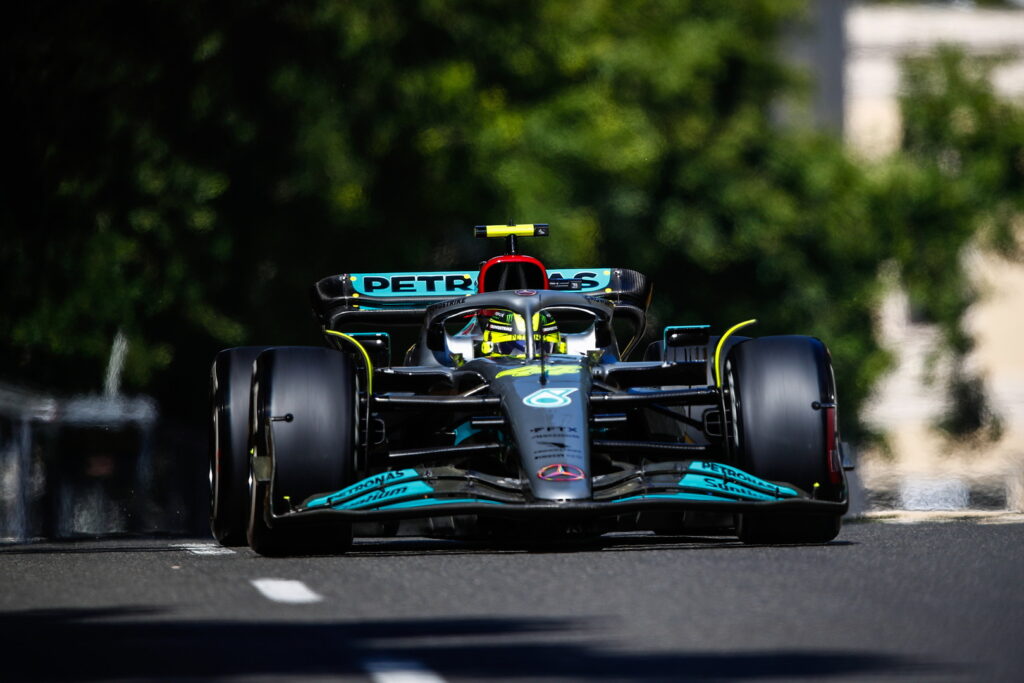Following multiple drivers expressing concern around the severity of their cars’ ‘porpoising’ during the recent Baku GP, and the visible discomfort it caused some come the end of the race, the FIA has stepped in to try and control the situation.
The problems appears to stem from some teams having to run exceptionally stiff setups in order to hit their ride height targets, and thus extract maximum performance from the underfloor, without the car experiencing excessive aero-triggered oscillations known as porpoising. This approach, for example in the case of Mercedes, appeared to work at the smooth Barcelona circuit, but during recent races around Monaco and Baku the stiff setup led instead to very harsh bottoming out of the cars on bumps.
Porpoising, bouncing and bottoming
As Mercedes’s motorsport strategy director, James Vowels, explained post Baku, “There is definitely a track-by-track element, and it is a function of the smoothness of the tarmac and the layout of the circuit. I would say that Baku, so far, is on the worse end of it and conversely, Barcelona probably on the better end of it.”
Vowels also differentiated between porpoising, bouncing and bottoming as being quite different, albeit related, phenomena. “We definitely suffered porpoising in the earlier races and in Barcelona we didn’t…..I am confident we made a step,” said Vowels. “We were able to drop the car in terms of ride height. Come Monaco and Baku that uncovered a second issue masked by the first. We very clearly have bouncing, and to the outside it looks almost identical [to porpoising]. There is a subtle difference between the two. What is happening now is that the car is lower, but is hitting the deck quite hard, causing the bouncing.”
So severe was the effect of this bouncing that Lewis Hamilton struggled to get out of his Mercedes come the end of the race, and with drivers commenting on the potential long-term health implications, the FIA was moved to act.
The FIA noted that it decided to intervene following consultation with its doctors in the interests of safety of the drivers. An FIA statement read. “In a sport where the competitors are routinely driving at speeds in excess of 300km/h, it is considered that all of a driver’s concentration needs to be focused on that task and that excessive fatigue or pain experienced by a driver could have significant consequences should it result in a loss of concentration. In addition, the FIA has concerns in relation to the immediate physical impact on the health of the drivers, a number of whom have reported back pain following recent events.”
The FIA solution to protect drivers
A technical directive has now been issued to give guidance to teams about the measures the FIA intends to take to tackle the problem. These will include:
– Closer scrutiny of the planks and skids, both in terms of their design and the observed wear
– The definition of a metric, based on the car’s vertical acceleration, that will give a quantitative limit for acceptable level of vertical oscillations. The exact mathematical formula for this metric is still being analysed by the FIA, and the Formula 1 teams have been invited to contribute to this process.
In addition to these short-term measures, the FIA says it will convene a technical meeting with the teams in order to define measures that will reduce the propensity of cars to exhibit such phenomena in the medium term.
The directive appears to place the onus on teams to stay within the to-be-defined limits via setup adjustment, rather than introducing rule changes that would force a redesign of cars’ aero packages. For some, such as Red Bull and Ferrari, who seem to be far less prone to the issue, the performance impact could be minimal; for those struggling, such as Mercedes, the implications in terms of competitiveness could be more detrimental.



